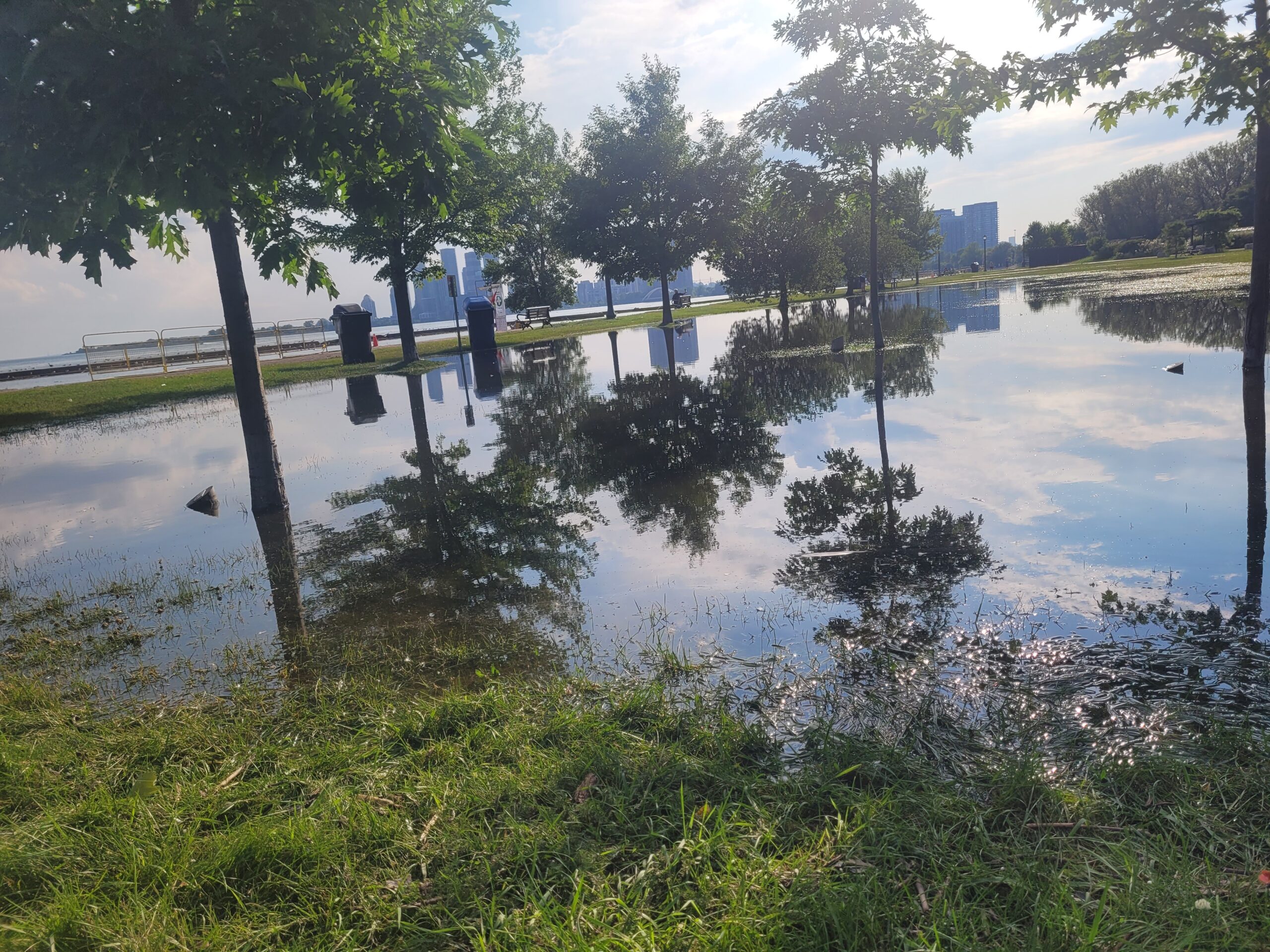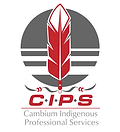Helping Businesses Become Resilient in the Face of Climate Change
Human-induced climate change is putting people, ecosystems, and the economy at risk. The International Panel of Climate Change (IPCC) Sixth Assessment Report (AR6) has identified human-induced warming of urban areas is leading to heavy precipitation and flood risks. In the Greater Toronto Area, businesses will need to assess upstream and downstream impacts related to their operations to mitigate the impacts of extreme heat and flood risk on their property.
The Corporate Flood and Heat Risk Management (CFHRM) program, delivered by Partners in Project Green in partnership with Sustainable Technologies Evaluation Program (STEP), educates and supports business managers, sustainability consultants, and facility managers from the Industrial, Commercial and Institutional (ICI)/Multi-Unit Residential Building (MURB) sectors to inspire action to build climate resilience.
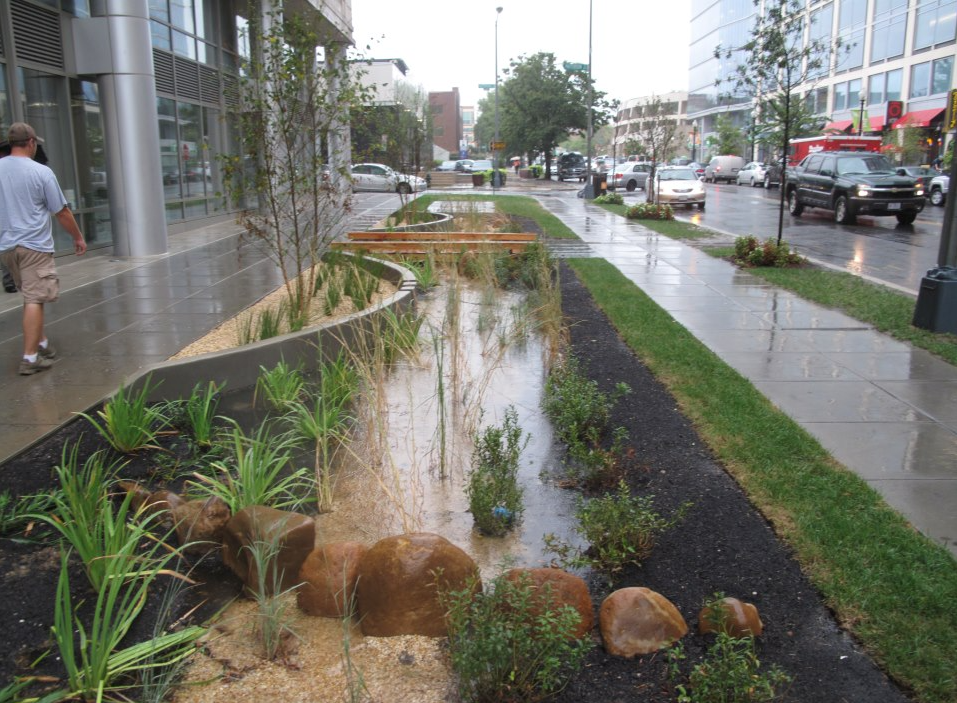
This programming focuses on Green Infrastructure (GI), also referred to as Low Impact Development (LID) or Nature-based Solutions. These techniques can take shape in many ways, one of the most effective outcomes is reducing impermeable surfaces such as concrete and asphalt, and replacing them with grass, gardens, gravel, or other solutions. The aim is to allow water to soak into the ground rather than run off into municipal storm drains, or into your building. They utilize the environmental services that nature provides as a method of building resiliency to climate change while creating a host of co-benefits such as:
- Improved water quality & groundwater recharge
- Reduced number of costly flooding events
- Reduced urban heat island effect
- Increased habitat for pollinators and other wildlife (e.g., birds)
- Enhanced natural beauty
The Program Includes:
1. Educational modules
These videos discuss flood and heat risks within the Greater Toronto Area, the need for flood mitigation measures, the issue of urban heat, and the business case for implementing Low Impact Development/Green Infrastructure solutions to build heat and flood risk resilience. A special module on understanding our collective connection to water through an Anishinaabe woman’s perspective is also available.
1. Introduction and Background of Flooding in the ICI Sector
2. Types of Flood Risk & TRCA Tools to Protect Your Business
3. Current Initiatives and Actions to Address Flood RIsks
4. Use of Low Impact Development & Green Infrastructure to Help Mitigate On-Site Stormwater Management Risks
1. Setting the Stage- Urban Heat
2. Green Infrastructure for Heat Mitigation and Adaptation
3. Why and How to Mitigate Urban Heat
1. The Beginning- Connection
2. Present Day, Loss of Connection
3. Possibilities
4. Walking Gently on Mother Earth Re-Connection
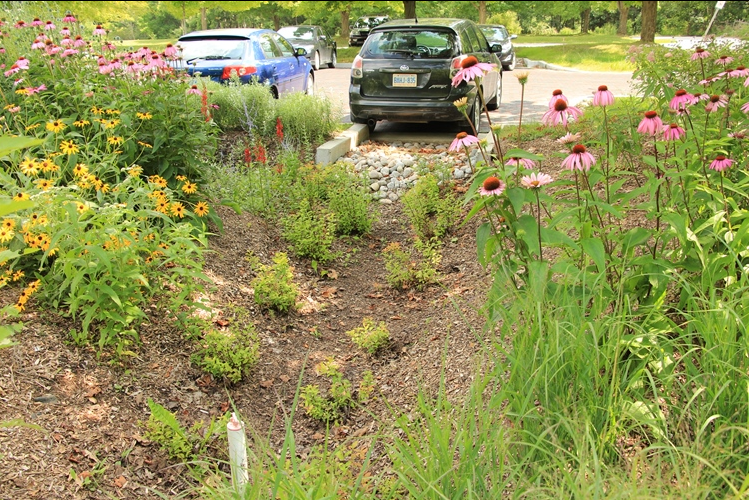
2) Site Assessments
Businesses within the regions of Peel, Toronto, and York may be eligible for site assessments that identify opportunities to improve on-site stormwater management and heat mitigation with a custom report. The site assessments are delivered in partnership with TRCA’s Sustainable Technology Evaluation Program.
1. A free outdoor Flood and Heat Risk Preparedness Assessment.
2. A summary of the results from the assessment with flood and heat resilience best practices for the property.
3. Knowledge of LID/GI measures that can help improve on-site, localized flood and heat risk resiliency.
4. LID/GI maintenance resources.
Participating businesses must be an ICI/MURB property landowner/lessee that meets the following criteria:
1. A Member of Partners in Project Green (Student and Professional members are not eligible). Learn more about PPG membership.
2. Landowner/lessee owns or leases a property with sizeable outdoor space within TRCA’s boundary.
3. Landowner/lessee demonstrates willingness to learn about best practices to improve on-site flood and heat risk resiliency on their property.
4. Landowner/lessee is committed to taking actions to improve climate resiliency and funding implementation of GI/LID solutions.
5. Landowner/lessee willing to have key staff complete free online training – Corporate Flood and Heat Risk Management program .
6. Lessees have written permission from landowner that:
– Allows TRCA to conduct outdoor site assessment (data collection)
– Allows implementation of LID/GI projects on their property that are funded by lessee or landowner (e.g., rain gardens, bioretention/bioswale, native vegetation plantings, etc.;
– Agrees to maintain projects implemented on the property.
Contact Chaya Chengappa at Chaya.Chenappa@trca.ca to set up a consultation meeting.
Resources
Unity Health Toronto Assesses Stormwater Management Improvements
In 2023, Unity Health Toronto’s Providence Healthcare partnered with Partners in Project Green to assess and mitigate flood and heat risks through Low Impact Development (LID) solutions. Using the Low Impact Development Treatment Train Tool (LID TTT), experts modeled stormwater drainage scenarios and recommended ten cost-effective LID projects—such as rain gardens and bio-swales—to enhance on-site stormwater infiltration, resilience, and sustainability.
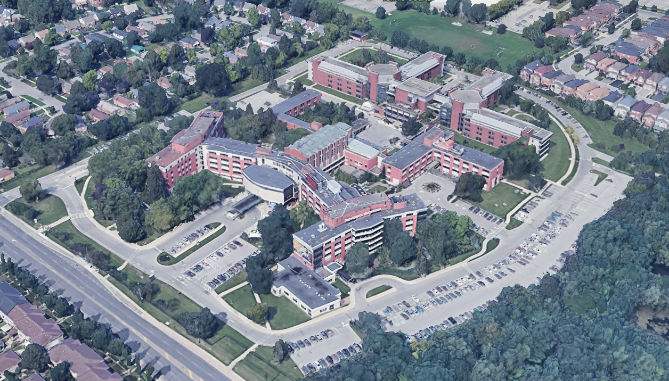
Limited site assessments available. If you are a business or MURB that is interested to learn more about the CFHRM site assessments and incentives, please contact Chaya.chengappa@trca.ca

